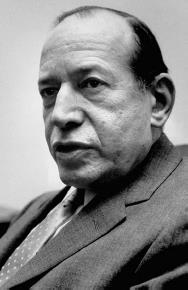The Warren Court (1953–69)Criminal Procedure and Constitutional Rights |
What did the Court rule in Gideon v. Wainwright? |
The story of Gideon v. Wainwright began when prosecutors in Florida charged Clarence Earl Gideon with breaking into the Bay Harbor Poolroom in Panama City, Florida. Gideon was not a man likely to change the legal system. He had spent time in prison for four different felonies. Gideon asked the state court judge to appoint him counsel, saying: “The United States Supreme Court says I am entitled to be represented by Counsel.” The trial judge denied his request. Gideon appealed all the way to the U.S. Supreme Court. The Supreme Court accepted his case and appointed Washington D.C. attorney Abe Fortas to argue the case for Gideon before the high court. (Fortas later became a justice on the U.S. Supreme Court). The Supreme Court overruled Betts v. Brady and determined that state criminal defendants charged with felonies have a constitutional right to the assistance of counsel.
Writing for the Court, Justice Hugo Black stated that “in our adversary system of criminal justice, any person hauled into court, who is too poor to hire a lawyer, cannot be assured a fair trial unless counsel is provided to him.” The Court reversed Gideon’s conviction. This meant that the state would have to appoint Gideon counsel if it sought to prosecute him again.

